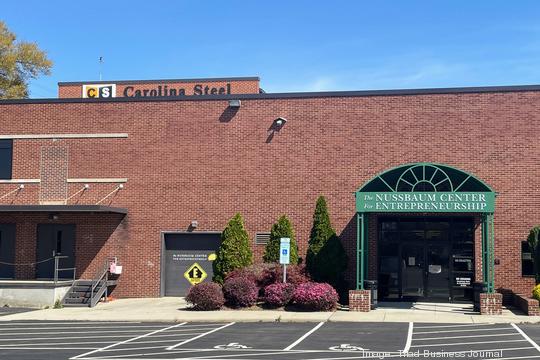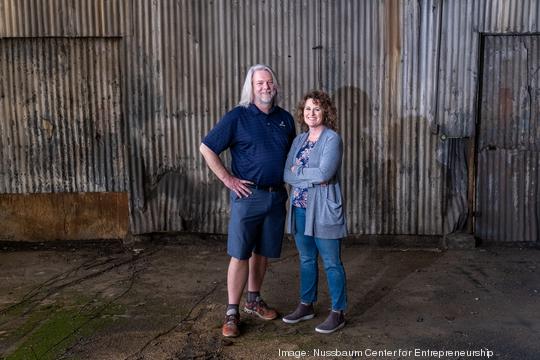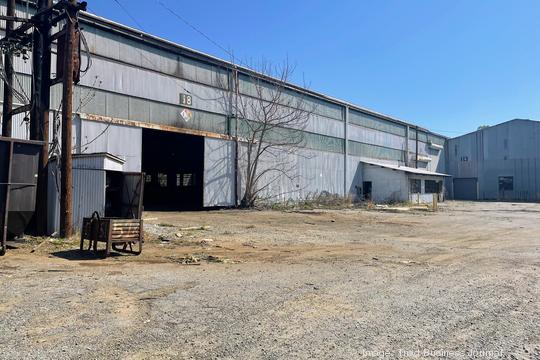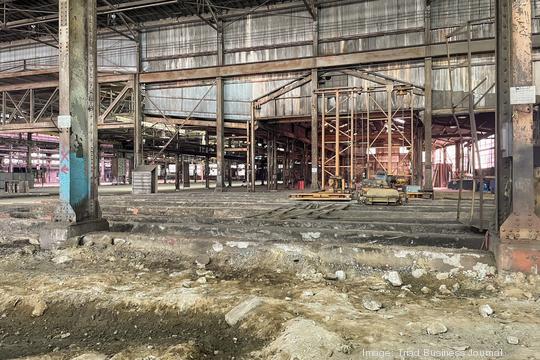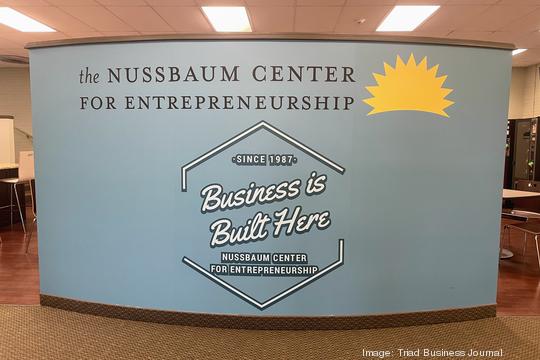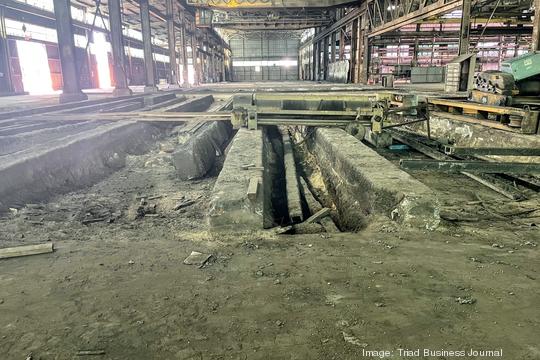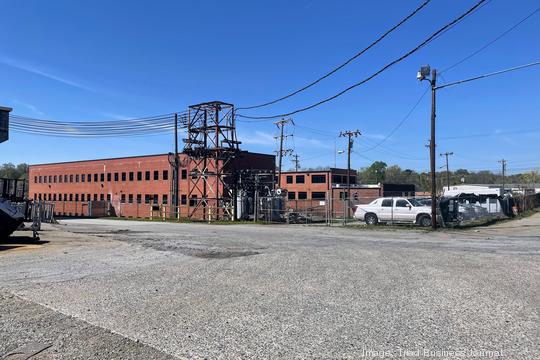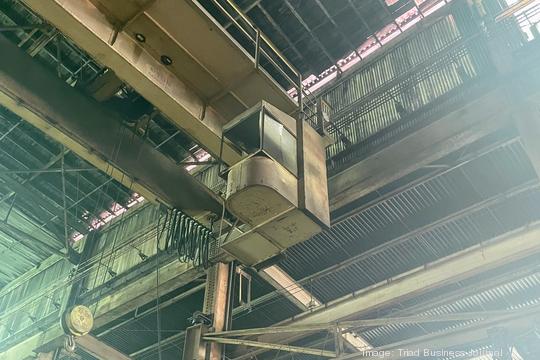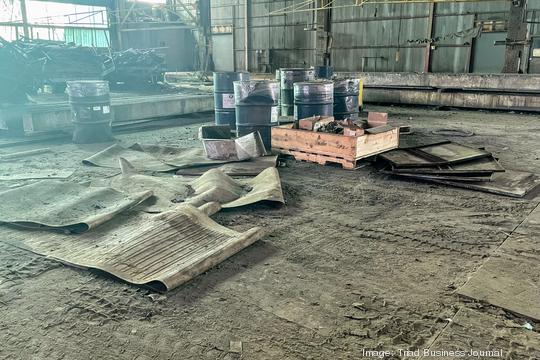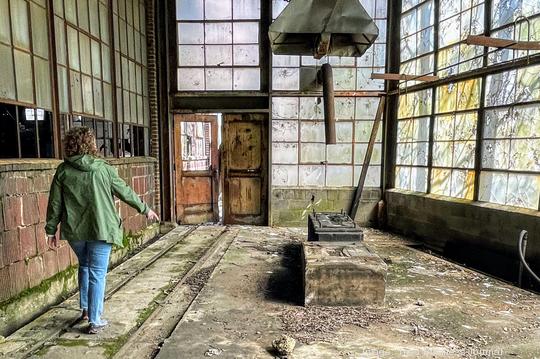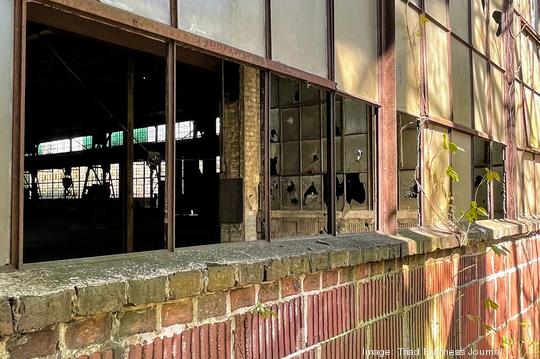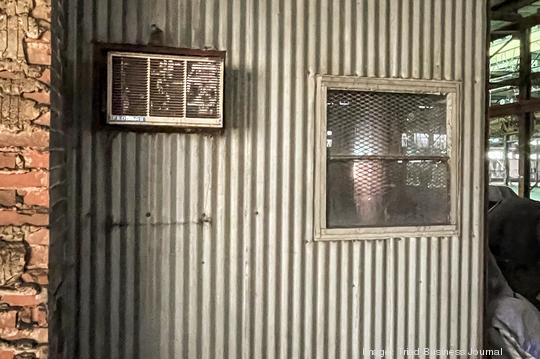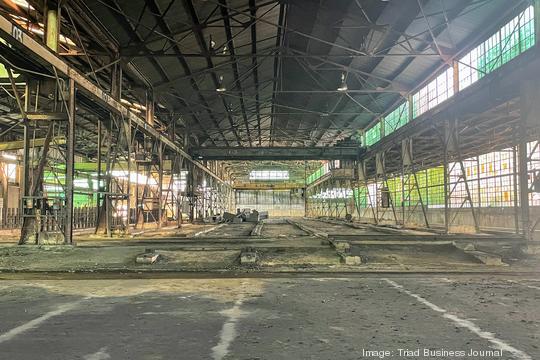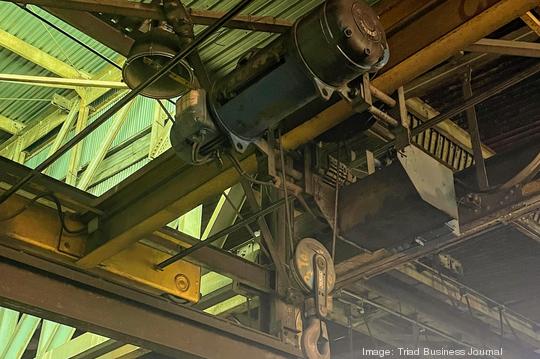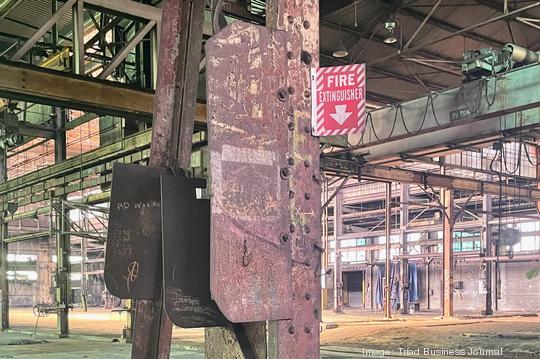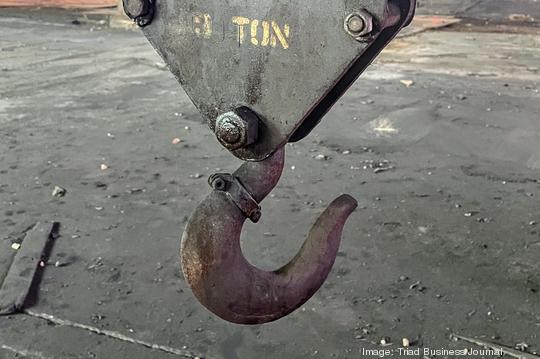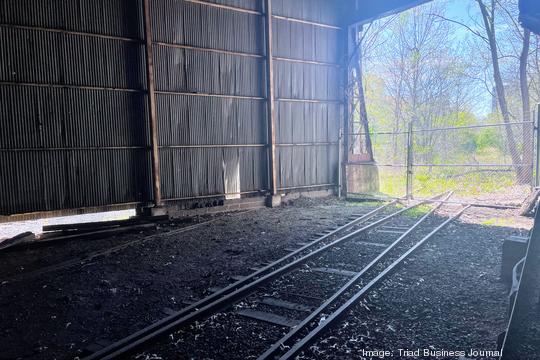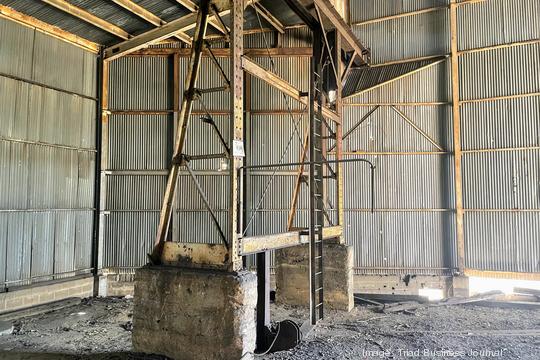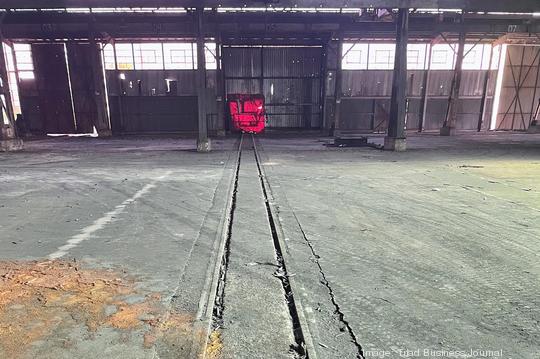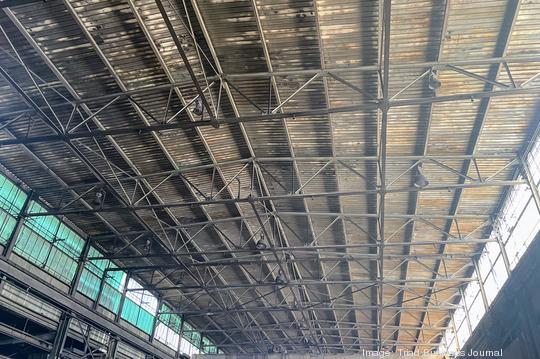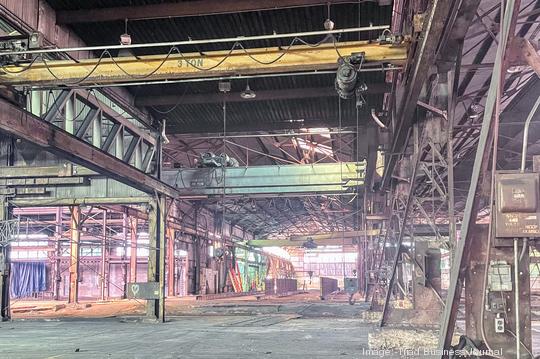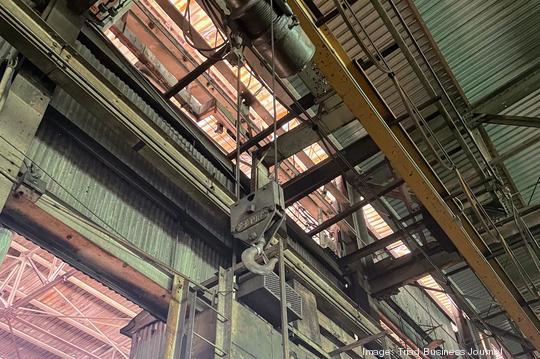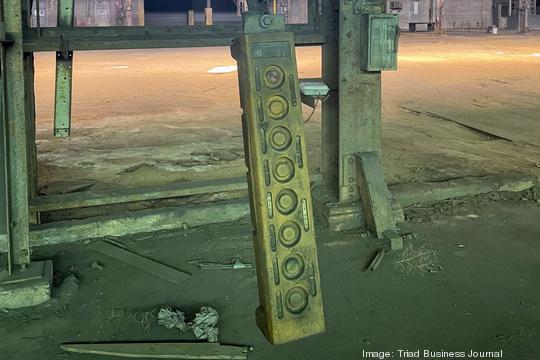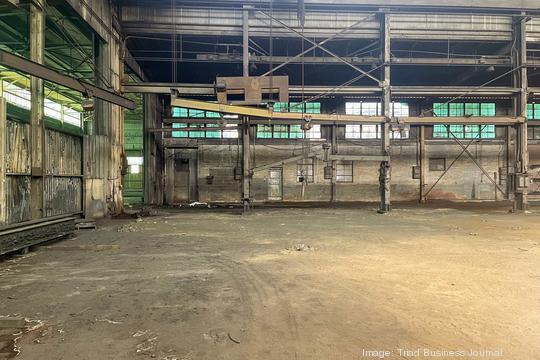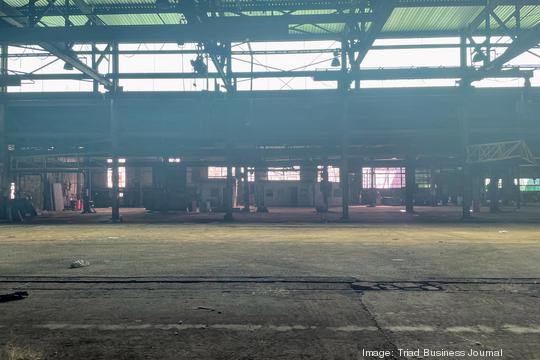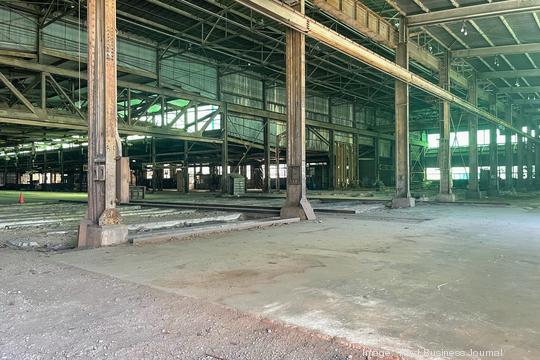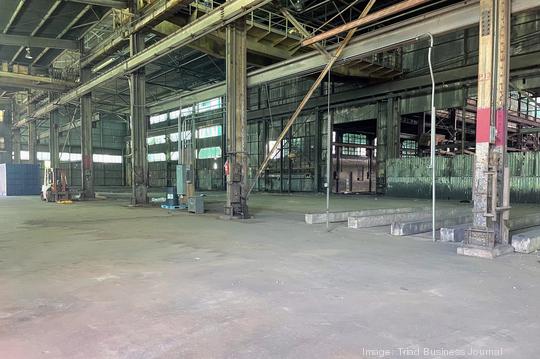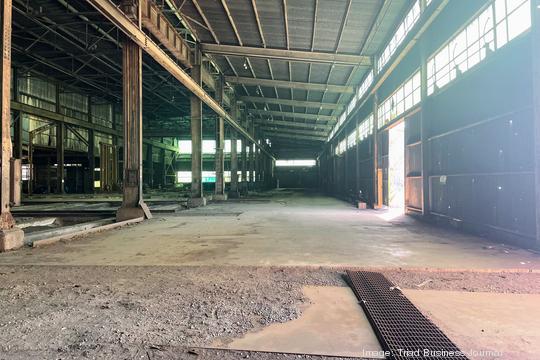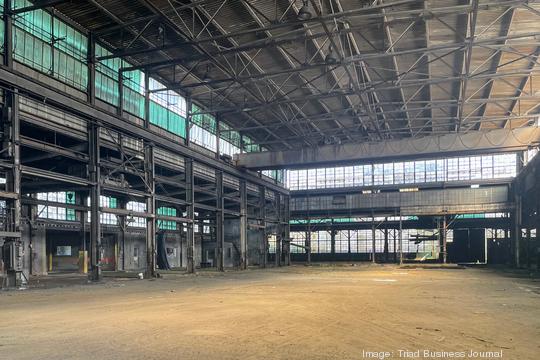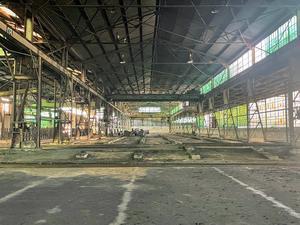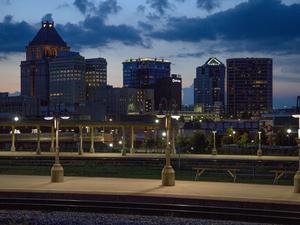The former Carolina Steel manufacturing center in downtown Greensboro sits empty, with over 200,000 square feet of dirt, concrete, trash and out-of-date machinery. The best thing to do would be to demolish the building, right?
Not so fast.
The Nussbaum Center for Entrepreneurship has envisioned a redevelopment of the Steelhouse and is renovating it for a multitude of uses, including a manufacturing center, ghost kitchens, a year-round farmers’ market and offices.
The Nussbaum Center, led by CEO Sam Funchess and Vice President Lisa Hazlett, assists entrepreneurs on their business journey by providing space and resources. The hope is that the Steelhouse, once completed, will be an extension of what the Nussbaum Center does, just across the parking lot.
“The vision and mission of the Steelhouse is helping entrepreneurs take their ideas to market,” Hazlett said. “The pandemic has heightened the importance of small business, and that’s why we’re pushing for the Steelhouse now.”
Steelhouse redevelopment at the Nussbaum Center
The Steelhouse, which used to be the headquarters and main production plant for Carolina Steel, officially shut down in 2009 and was donated to the Nussbaum Center in 2014 by D.H. Griffin and Jimmy Clark. The Nussbaum Center's office building was also donated by the same duo in 2011, Hazlett said.
Triad Business Journal recently toured the Steelhouse to see the vision of Funchess and Hazlett for the project that is expected to cost about $38 million and create 600 jobs down on South Elm-Eugene Street.
Phased approach
The expansive Steelhouse site provides a lot of opportunity – and the Nussbaum Center doesn’t want to do just one thing with it. It will take a phased approach to build out the different areas. The Nussbaum Center estimates that all phases, with the exception of the first phase, will each cost approximately $12 million and that three jobs will be created or retained for every 1,000 square feet in the Steelhouse.
Phase I will consist of 20 ghost kitchens, food preparation facilities designed for delivery-only ordering.
The ghost kitchen phase has already received a commitment for a $2 million investment from an undisclosed organization that will pay for Phase I. Hazlett estimates Phase I will create approximately 100 jobs that will pay wages 20% higher than the county average. The investor will be made known once construction begins.

Hazlett said that this phase is a “done deal,” so long as the Nussbaum Center can have its new fire safety plan approved. The Steelhouse, built in the early 1900s, did not have fire safety infrastructure, which could pose a large problem for the ghost kitchens as well as other planned areas of the project.
Once the city approves the fire safety plan, construction on the ghost kitchens can begin. Hazlett expects that phase to take about six months.
Phase II would be comprised of 60,000 square feet of a manufacturing center that Hazlett said would create or retain 177 jobs. Some existing businesses and jobs will move into the space and some new businesses and jobs will move into the space, she said.
Forge Greensboro, a nonprofit community makerspace, has committed to moving into the manufacturing area in the Steelhouse once renovations are complete. With 250 members, two full-time and four-part time employees and over 20 core volunteers, the Forge is outgrowing its space in the South End, so relocating to the Steelhouse would allow it to increase its membership and capabilities as it would more than double its space to 28,000 square feet.
A preliminary engineering report from SKA Consulting Engineers Inc. estimates that the total cost of renovations for the manufacturing center will be just under $13 million.
The Steelhouse has an extensive overhead crane system ranging in weight from 2 tons to 20 tons. Some will be made operational again, Hazlett said, for manufacturers.
Phase III is planned to be a community space, including a food hall, year-round farmers market and artisans studios and retail space.
The space might also be fitting for a craft brewery, as the Steelhouse also has capacity for outdoor seating on its acre of land.
With 40-foot-high ceilings, the Steelhouse can accommodate two more floors in the building. Hazlett expects to create about 40,000 square feet of office space targeted for entrepreneurs and startups looking for small offices like those at the Nussbaum Center.
The last part of the project, Phase IV, will be 40,000 square feet of qualified food production space, combining private kitchens and production lines.
The Steelhouse also has about 2,000 linear feet of rail line that comes through the building. One rail line the Nussbaum Center definitely does not want to reactivate, Hazlett said, as it would interfere with redevelopment plans. But there is one that it is looking to renovate, as it connects to the Norfolk Southern line that leads one way to the Toyota Megasite and the other way to the airport.
“We see a lot of opportunity for the rail and with all of these economic development announcements coming, we’re getting a lot of inquiries because of the rail,” Hazlett said. “What we’re told is that there are very few, if any, rail lines in the city of Greensboro that have capacity for additional traffic, so we’re the only one. We just need to get the rails up and running.”
With everything that is planned to be in the Steelhouse, heavy traffic in the area is expected. The current parking lot has 132 spots and then the Nussbaum Center expects to take off about 10,000 to 20,000 square feet from the front of the Steelhouse building for additional parking.
Money, money, money
As of right now, the Nussbaum Center has $63 million out in grant requests, all of which should be decided by September, Hazlett said. Each phase of the redevelopment has its own grant application.
Hazlett said the Nussbaum Center is only trying to raise funds through grants. In doing so, the Steelhouse will break even at 19% occupancy, she said. At 100%, it will operate at $1 million in free cash flow that will be reinvested in serving entrepreneurs at the Nussbaum Center.
In order for a small-business incubator to be self-sustaining, Hazlett said it needs 100,000 square feet of leasable space. Currently, in its 65,000-square-foot building, the Nussbaum Center has 35,000 square feet of leasable space. The plans for the Steelhouse would bring it close to 200,000 square feet of leasable space.
The estimated $12 million per phase cost will cover everything from engineering to contractors to materials, Hazlett said.
The Nussbaum Center has raised $625,000 from the Stanley and Dorothy Frank Foundation, the Cemala Foundation, the Carolina Steel Foundation and the Golden LEAF Foundation. Of that collective $625,000, $200,000 from Golden LEAF is designated for fire safety and $100,000 from Cemala is for two bays within the manufacturing center. The rest is for the overall project. In addition, Phase I already has received the $2 million investment referenced previously from an undisclosed source, Hazlett noted.
For Phase II, the Nussbaum Center is seeking just under $13 million as part of the Piedmont Triad Regional Council’s SITE Next-Gen application to the Economic Development Administration’s Build Back Better Regional Challenge, for which the PTRC is a finalist. Forge Greensboro has also applied for its own funding through the EDA to assist in the makerspace’s relocation.
If the Nussbaum Center is awarded the funding through the EDA, it will begin a six-month design process and then construction would be expected to be completed by 2023.
For Phase III, the Nussbaum Center applied for city and county funding, including for a $2 million portion of Greensboro’s American Rescue Plan funding. It has not begun fundraising yet for the final phase.
“The nice thing is that what we believe is going to happen when that first crane appears out there and people start seeing activity, there’s going to be a level of excitement and enthusiasm that maybe doesn’t exist right now, because so many people walk in here and they don’t see it,” Hazlett said. “Sam can walk into here and see what it’s going to look like, but you have a lot of people that walk in here and can’t. They see the dirt, they see the trash, they see that thing sitting on the ground.”
Impact of the Steelhouse
If the Steelhouse receives all the grants it has applied for, the entire Steelhouse redevelopment could be done by the first quarter of 2024.
Marshall Yandle, economic development manager for the city of Greensboro, said that the multitude of uses planned at the Steelhouse will only benefit the area and the entrepreneurial ecosystem.
“Having all those types of activities at one campus should generate more collaboration and creativity than if they were at separate locations,” he said. “Some of those parts definitely complement each other and certainly all of them could take advantage of the services already housed at the Nussbaum Center.”
With the Nussbaum Center at 92% capacity, the Steelhouse plans to rent out space to local entrepreneurs. Rent, which will cost a similar rate of what the Nussbaum Center currently charges at $300 to $350 per month, will cover housekeeping, water, electric and membership to Forge Greensboro.
Hazlett wants to ensure that the space will be scalable so that as a person’s business grows, the Steelhouse can accommodate them.
As developers works on an innovation district in downtown Greensboro, the Nussbaum Center and the Steelhouse will serve as the southernmost point.
In addition, the Steelhouse is within two housing communities and is in a federally designated opportunity zone, meaning it is low income and high poverty and in a food desert. For Hazlett, this means that the redevelopment is also a revitalization project.
“We hope that the surrounding neighborhoods would have employment opportunities and better access to healthy foods once all the phases of the Steelhouse Project are complete,” Yandle said. “Public transit stops are also in close proximity for citizens who are not within walking distance.”
In not demolishing the Steelhouse and instead redeveloping it, the Nussbaum Center will be preserving a piece of Greensboro’s – and North Carolina’s – history.
“It’s a big project, but I think it’s going to be rewarding; it’s going to be impactful,” she said. “This is our entrance into downtown Greensboro.”
